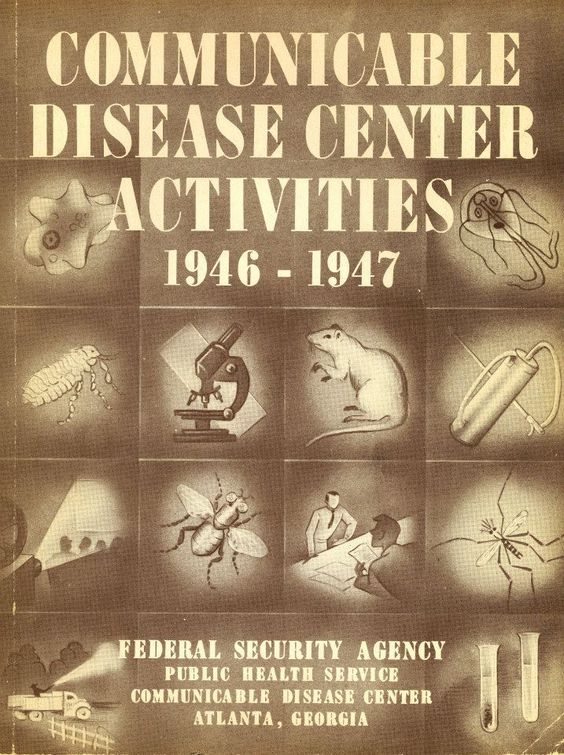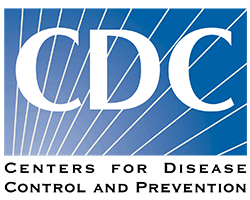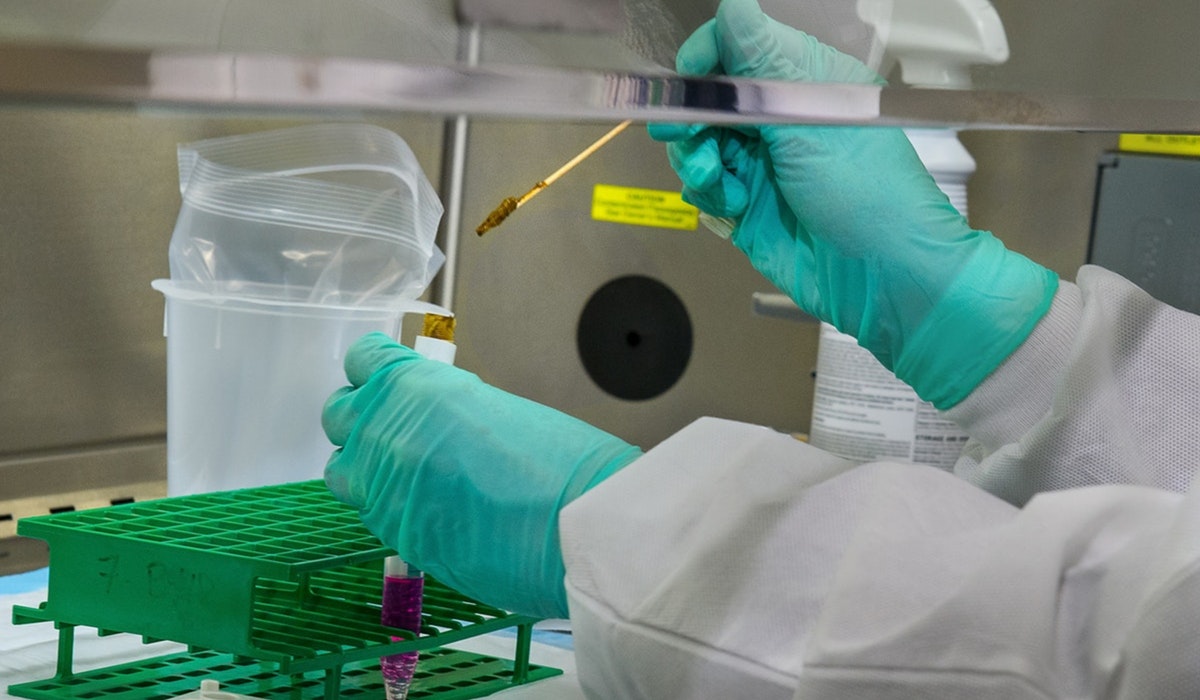ARTICLE SUMMARY:
The COVID-19 outbreak and ongoing global public health response is bringing the far-reaching capabilities of the US Centers for Disease Control and Prevention into the spotlight. With its beginnings fighting mosquitoes and malaria in the 1940s, the agency is the world authority on communicable disease, and its role includes protecting Americans from every major cause of preventable injury and death.
In 1946, US President Harry S. Truman officially ended World War II, and the post-war Baby Boom generation began, which ran through 1964. Also in this year, the controversial "bikini" swimsuit debuted at a poolside fashion show in Paris, the first meeting of the United Nations was held, and the ENIAC (Electronic Numerical Integrator and Computer), the first completely electronic computer, was unveiled at the University of Pennsylvania. The “Giant Brain,” as it was dubbed by the press, was financed by the  US Army, Ordnance Corps, Research and Development Command, weighed 30 tons, occupied 1,800 square feet of space, and cost about $500,000 to build (approximately $6.3 million today). Using the revolutionary machine, ballistics calculations that previously took 12 hours on a hand calculator could be done in just 30 seconds. From then on, computers were developed to be smaller, more capable, and more affordable.
US Army, Ordnance Corps, Research and Development Command, weighed 30 tons, occupied 1,800 square feet of space, and cost about $500,000 to build (approximately $6.3 million today). Using the revolutionary machine, ballistics calculations that previously took 12 hours on a hand calculator could be done in just 30 seconds. From then on, computers were developed to be smaller, more capable, and more affordable.
In this same year, a small, relatively insignificant branch of the Public Health Service opened in Atlanta, GA, named the Communicable Disease Center (CDC). The CDC was initially tasked with the enormous challenge of preventing the rampant spread of malaria across the US. Launched with a budget of only $10 million and fewer than 400 employees, its  early challenges included obtaining enough trucks, sprayers, and shovels necessary to wage war on mosquitoes. The CDC was organized around the foundation of its predecessor, the Malaria Control in War Areas program, established in 1942 as the US was mobilizing for World War II, to fight malaria primarily in 15 southeastern states where most of the US basic military training was conducted.
early challenges included obtaining enough trucks, sprayers, and shovels necessary to wage war on mosquitoes. The CDC was organized around the foundation of its predecessor, the Malaria Control in War Areas program, established in 1942 as the US was mobilizing for World War II, to fight malaria primarily in 15 southeastern states where most of the US basic military training was conducted.
As the CDC took root in Atlanta, its founder and a pioneer in public health, Joseph Mountin, MD, continued to advocate for public health issues. In 1946, Coca-Cola Chairman Robert Woodruff brokered an agreement with Emory University to sell 15 acres of land at its Atlanta campus to the federal government for $10—this became the new CDC headquarters (the CDC campus has grown to 45 acres today). After achieving its initial goal of eliminating malaria in the US in 1951, the CDC broadened its mission to include tracking and investigating a range of diseases. In the 1950s, the agency helped identify and then correct a problem with the Salk polio vaccine and then developed national guidelines for an influenza vaccine during a massive flu outbreak. In the 1960s and 1970s, the CDC played a key role in the eradication of smallpox.
 The CDC has broadened its focus far beyond transmissible diseases to all kinds of public health issues, including obesity, diabetes, tobacco use, motor vehicle safety, safer foods, family planning, workplace safety, bioterrorism, birth defects, environmental health threats, and much more. In 1992, Congress changed the agency’s name to the Centers for Disease Control and Prevention, as part of the Preventive Health Amendments of 1992, to recognize CDC's leadership role in the prevention of disease, injury, and disability. The agency has noted that its achievements in public health led to a 25-year increase in life US expectancy since 1900.
The CDC has broadened its focus far beyond transmissible diseases to all kinds of public health issues, including obesity, diabetes, tobacco use, motor vehicle safety, safer foods, family planning, workplace safety, bioterrorism, birth defects, environmental health threats, and much more. In 1992, Congress changed the agency’s name to the Centers for Disease Control and Prevention, as part of the Preventive Health Amendments of 1992, to recognize CDC's leadership role in the prevention of disease, injury, and disability. The agency has noted that its achievements in public health led to a 25-year increase in life US expectancy since 1900.
Today, the CDC employs more than 14,000 people in 54 countries and in 170 different occupations. It is one of the major operating components of the Department of Health and Human Services, and is recognized as the nation’s premiere health promotion, prevention, and preparedness agency. It also works to foster and develop innovative science, technologies (including medical devices), processes, and policies that support its ability to protect and promote the health of Americans and people around the world.
Currently, the CDC is working closely with local, state, national, and international partners to monitor the rapidly evolving COVID-19 outbreak as a “public health emergency of international concern,” and is implementing its pandemic preparedness and response plans. On February 4, CDC was the first to be issued an Emergency Use Authorization from the FDA for the use of its “Centers for Disease Control and Prevention (CDC) 2019-Novel Coronavirus (2019-nCoV) Real-Time Reverse Transcriptase (RT)-PCR Diagnostic Panel” for the detection of COVID-19 from respiratory secretions such as nasal or oral swabs.
Regularly updated information regarding COVID-19 is being posted on the CDC Coronavirus Disease 2019 (COVID-19) website, on its News Releases page, and the FDA’s Coronavirus Disease 2019 (COVID-19) page.
#InMedtechHistory #medicaldevice #biomedical #CDC #CentersforDiseaseControlandPrevention #CommunicableDiseaseCenter #COVID19 #coronavirus #novelcoronavirus #malaria #MalariaControlinWarAreas #MCWA #babyboomer #ENIAC #GiantBrain #HarryTruman #GlenBeck #BettySnyder #USArmy #JosephMountin #CocaCola #RobertWoodruff #EmoryUniversity #polio #influenza #smallpox #HHS #EUA #FDA #medtech #CommunityBlog #MedTechStrategist #tracyschaaf
![]() Trial MyStrategist.com and unlock 7-days of exclusive subscriber-only access to the medical device industry's most trusted strategic publications: MedTech Strategist & Market Pathways. For more information on our demographics and current readership click here.
Trial MyStrategist.com and unlock 7-days of exclusive subscriber-only access to the medical device industry's most trusted strategic publications: MedTech Strategist & Market Pathways. For more information on our demographics and current readership click here.
